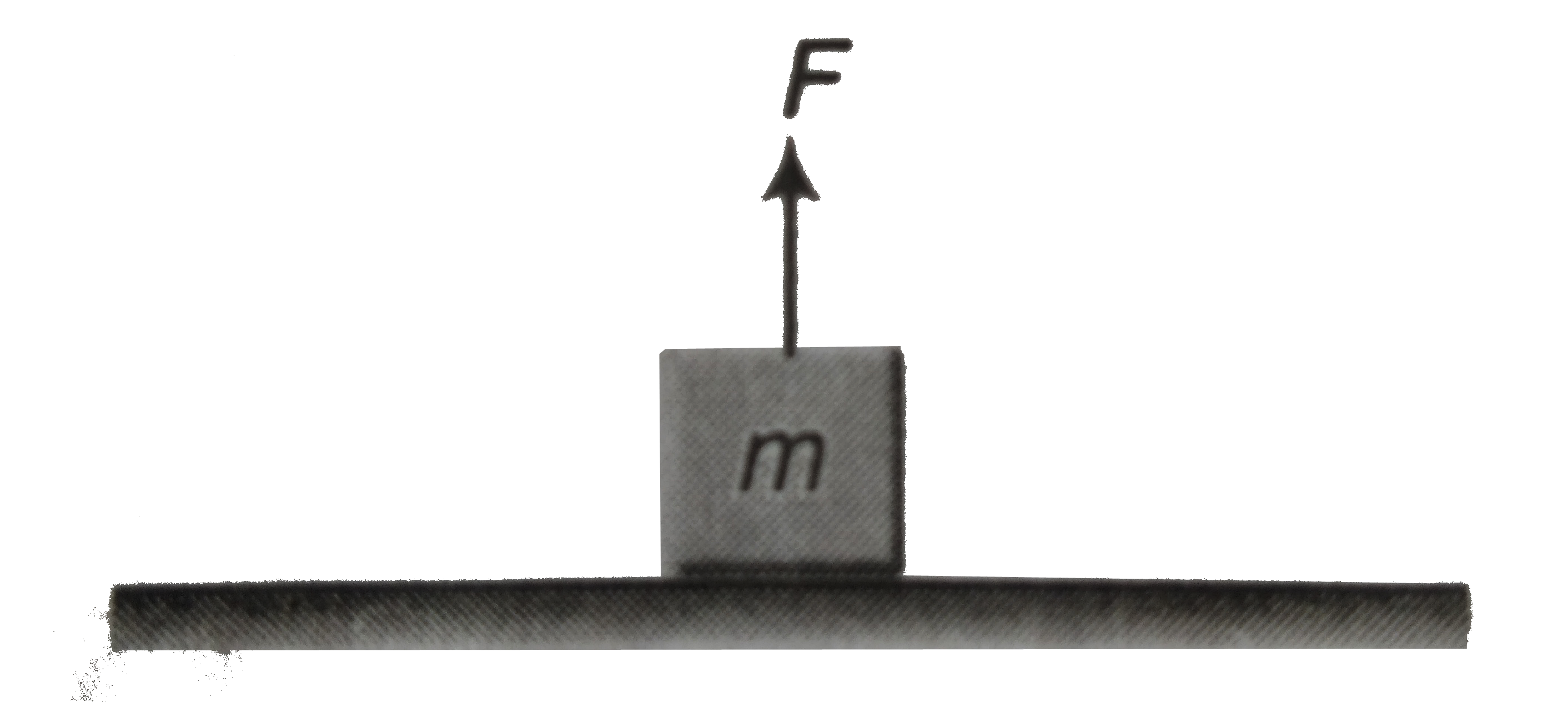A block of mass m is pulled slowly by a minimum constant force on a rough (μ) horizontal surface through a distance x. Find work done by force F.
The work done by the force F is

W=∫→Fmin⋅d→s=Fminxcosθ (i)
For slowly pulling the block.
Fcosθ=μN (ii)
In vertical direction
Fsinθ+N−mg=0
N=Fsinθ−mg (iii)

Using Eqs. (ii) and (iii),
F=μmgsinθ+μcosθ
F is minimum when tanθ=μ
Fmin=μmg√1+μ2 (iv)
Using Eqs. (i) and (iv),
W=μmgx√1+μ2⋅1√1+μ2=μmg1+μ2
Topper's Solved these Questions
- BOOK - CENGAGE PHYSICSCHAPTER - WORK, POWER & ENERGYEXERCISE - Exercise 8.225videos
WORK, POWER & ENERGY
- BOOK - CENGAGE PHYSICSCHAPTER - WORK, POWER & ENERGYEXERCISE - Exercise 8.326videos
WORK, POWER & ENERGY
- BOOK - CENGAGE PHYSICSCHAPTER - WORK, POWER & ENERGYEXERCISE - Solved Examples15videos
WORK, POWER & ENERGY
- BOOK - CENGAGE PHYSICSCHAPTER - VECTORSEXERCISE - Exercise Multiple Correct5videos
VECTORS
Similar Questions
A block of mass m is pulled slowly by a minimum constant force on a rough (μ) horizontal surface through a distance x. Find work done by force F.
View SolutionA block of mass m ios pulled by a constant power P placed on a rough horizontal plane. The friction co-efficient between the block and surface is μ. Find maximum velocity of the block.
View Solution
Knowledge Check
- Question 1 - Select One or More
A block of mass m is pulled by a force of constant power P placed on a rough horizontal plane. The friction coefficient between the block and the surface is μ. Then
AThe maximum velocity of the block during the motion is PμmgBThe maximum velocity of the block during the motion is P2μmgCThe block's speed is never decreasing and finally becomes constantDThe speed of the block first increases to a maximum value and then decreases - Question 2 - Select One
A block of mass m is pulled by a constant powert P placed on a rough horizontal plane. The friction coefficient the block and surface is μ. The maximum velocity of the block is.
ApmgBμpmgCpμmgDpN2/mg - Question 3 - Select One
A force F is applied on a lawn move at an angle of 60∘ with the horizontal. If it moves through a distance x, the work done by the force is
AFx/2BF/2xC2FxD2x/F
A block of mass m is pulled by a constant power P placed on a rough horizontal plane. The coeficient of friction between the block and surface is μ. Find the maximum velocity of the block.
View SolutionA block of mass 2 kg is pulled through 3 m by a constnat horizontal force of 10N, along a frictionless horizontal table. What is the work doen by (i) the applied force and (ii) the gravitational force?
View SolutionA block of mass m is kept on a rough horizontal surface. It is moved through a distance (s) by applyig a force F in the horizontal direction. What is the work done by the normal reaction?
View SolutionWork done by the gravitational force on a body of mass ''m'' moving on a smooth horizontal surface through a distance 's' is
View SolutionA block of mass m=2kg is pulled by a force F=40N upwards through a height h=2m. Find the work done on the block by the applied force F and its weight mg. (g=10m/s2).
 View Solution
View Solution

